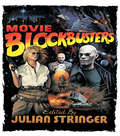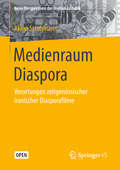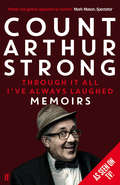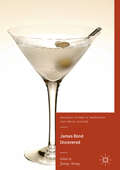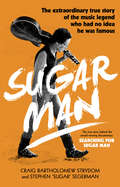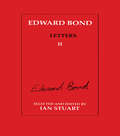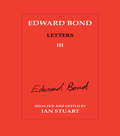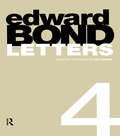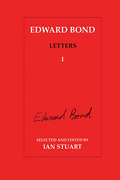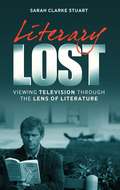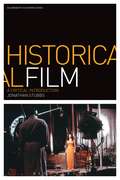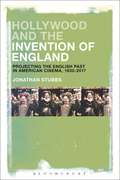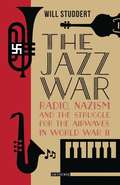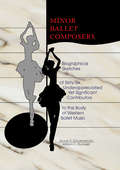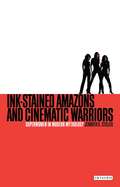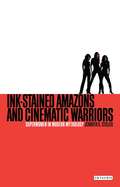- Table View
- List View
Movie Blockbusters
by Julian StringerBig-budget, spectacular films designed to appeal to a mass audience: is this what - or all - blockbusters are? Movie Blockbusters brings together writings from key film scholars, including Douglas Gomery, Peter Kramer, Jon Lewis and Steve Neale, to address the work of notable blockbuster auteurs such as Steven Spielberg and James Cameron, discuss key movies such as Star Wars and Titanic, and consider the context in which blockbusters are produced and consumed, including what the rise of the blockbuster says about the Hollywood film industry, how blockbusters are marketed and exhibited, and who goes to see them. The book also considers the movie scene outside Hollywood, discussing blockbusters made in Bollywood, China, South Korea, New Zealand and Argentina
Movie Blockbusters
by Julian StringerBig-budget, spectacular films designed to appeal to a mass audience: is this what - or all - blockbusters are? Movie Blockbusters brings together writings from key film scholars, including Douglas Gomery, Peter Kramer, Jon Lewis and Steve Neale, to address the work of notable blockbuster auteurs such as Steven Spielberg and James Cameron, discuss key movies such as Star Wars and Titanic, and consider the context in which blockbusters are produced and consumed, including what the rise of the blockbuster says about the Hollywood film industry, how blockbusters are marketed and exhibited, and who goes to see them. The book also considers the movie scene outside Hollywood, discussing blockbusters made in Bollywood, China, South Korea, New Zealand and Argentina
Medienraum Diaspora: Verortungen zeitgenössischer iranischer Diasporafilme (Neue Perspektiven der Medienästhetik)
by Alena StrohmaierAlena Strohmaier diskutiert in diesem Open-Access-Buch die komplexen Konfigurationen von Diaspora, deren soziopolitische und kulturelle Aspekte und unternimmt eine theoretische Dimensionierung des Begriffs, indem sie diesen als sowohl räumliche als auch filmische Kategorie versteht. Als Bindeglied zwischen den beiden Theorietraditionen dient ihr dabei die Kategorie des Raums, die als ästhetische Kategorie gleichermaßen konstitutiv für filmische Artefakte ist, wie sie es als sozialgeografische für die Diaspora ist. Die Autorin zeigt am Beispiel des zeitgenössischen iranischen Diasporafilms, wie die Theorie des Films mit dem Konzept der Diaspora jenseits essentialistischer Vorstellungen von ethnischen, kulturellen oder religiösen Zugehörigkeiten zusammenzudenken ist.
Through it All I've Always Laughed: Memoirs of Count Arthur Strong
by Count Arthur StrongCount Arthur Strong tells the story of his extraordinary journey from his humble early years as the only son of contortionist in wartime Doncaster to the dizzy heights and excesses of fame as one of the shining lights of popular entertainment. Count Arthur Strong is a show business legend, after-dinner speaker and a leading authority on Ancient Egypt, having been stationed there during his nation service. He has countless friends in the showbiz world. People like Barry Cryer, the white haired one with glasses off 'I'm Sorry I Haven't Got A Clue' and 'Jokers Wild'. This is his first volume, of what he believes may be a 6 volume collection, of his memoirs. He has a few select dates still available for anything (except window cleaning) and is represented, (if you can call it that) by Richard Daws at Komedia Entertainment. (Or if you want to go directly through me and pay cash, I can do that as well.) (In fact I prefer that.) Thank you.
James Bond Uncovered (Palgrave Studies In Adaptation And Visual Culture Series)
by Jeremy StrongThis volume brings fresh perspectives to the study of James Bond. With a strong emphasis on the process of Bond’s incarnation on screen and his transit across media forms, chapters examine Bond in terms of adaptation, television, computer games, and the original novels. Film nonetheless provides the central focus, with analysis of both the corpus as a whole—from Dr. No to Spectre—and of particular films, from popular and much-discussed movies such as Goldfinger and Skyfall to comparatively under-examined texts such as the 1967 Casino Royale and A View to a Kill. Contributors’ expertise and interests encompass such diverse aspects of and approaches to the Bond stories as Sound Design, Empire, Food and Taste, Geo-politics, Feminist re-reading, Tarot, Landscape and Sets.
James Bond Uncovered (PDF)
by Jeremy StrongThis volume brings fresh perspectives to the study of James Bond. With a strong emphasis on the process of Bond’s incarnation on screen and his transit across media forms, chapters examine Bond in terms of adaptation, television, computer games, and the original novels. Film nonetheless provides the central focus, with analysis of both the corpus as a whole—from Dr. No to Spectre—and of particular films, from popular and much-discussed movies such as Goldfinger and Skyfall to comparatively under-examined texts such as the 1967 Casino Royale and A View to a Kill. Contributors’ expertise and interests encompass such diverse aspects of and approaches to the Bond stories as Sound Design, Empire, Food and Taste, Geo-politics, Feminist re-reading, Tarot, Landscape and Sets.
Sugar Man: The Life, Death and Resurrection of Sixto Rodriguez
by Craig Bartholomew Strydom Stephen 'Sugar' SegermanIn the summer of 1972, during a compulsory stint in the South African military, Stephen 'Sugar' Segerman heard the music that would forever change his life. A decade later, on yet another military base, Craig Bartholomew Strydom heard the same music. It would have a profound effect. Who was this folk singer who resonated with South Africa's youth? No one could say. All that anyone knew was his name - Rodriguez - and the fact that he had killed himself on stage after reading his own epitaph.After many years of searching in a pre-internet age, Strydom with support from Segerman found the musician not dead but alive and living in seclusion in Detroit. Even more remarkable was the fact that Rodriguez, no longer working as a musician and struggling to eke out a blue-collar existence, had no idea that he had been famous for over 25 years in a remote part of the world...
Edward Bond: Letters 2
by Ian StuartFirst Published in 1996. Routledge is an imprint of Taylor & Francis, an informa company.
Edward Bond: Letters 2
by Ian StuartFirst Published in 1996. Routledge is an imprint of Taylor & Francis, an informa company.
Edward Bond: Letters 3
by Ian StuartFirst Published in 1997. Routledge is an imprint of Taylor & Francis, an informa company.
Edward Bond: Letters 3
by Ian StuartFirst Published in 1997. Routledge is an imprint of Taylor & Francis, an informa company.
Edward Bond: Letters 4 (Contemporary Theatre Studies #Vol. 14.)
by Ian StuartEdward Bond Letters, Volume IV, focuses on four significant areas of Edward Bond's work: education, imagination and the child; theatre-in-education; At the Inland Sea; language and imagery. The letters represent a coruscating attack on our present society, as well as offering insights into how the situation might be improved. Bond's letters attack modern education, arguing that "children are being educated to sell themselves" and suggesting that social problems are caused by an oppression of the imagination. Many letters refer directly to a play - for instance Tuesday, which presents an assessment of the many difficulties faced by contemporary society. The language and imagery of one of Bond's most recent plays, In the Company of Men, is animatedly discussed, and Bond reminds us in a final description that "the good image is always absent, because it is present in the mind.
Edward Bond: Letters 4
by Ian StuartEdward Bond Letters, Volume IV, focuses on four significant areas of Edward Bond's work: education, imagination and the child; theatre-in-education; At the Inland Sea; language and imagery. The letters represent a coruscating attack on our present society, as well as offering insights into how the situation might be improved. Bond's letters attack modern education, arguing that "children are being educated to sell themselves" and suggesting that social problems are caused by an oppression of the imagination. Many letters refer directly to a play - for instance Tuesday, which presents an assessment of the many difficulties faced by contemporary society. The language and imagery of one of Bond's most recent plays, In the Company of Men, is animatedly discussed, and Bond reminds us in a final description that "the good image is always absent, because it is present in the mind.
Edward Bond Letters: Volume 5
by Ian StuartFirst Published in 1994. Routledge is an imprint of Taylor & Francis, an informa company.
Edward Bond Letters: Volume 5 (Contemporary Theatre Studies #Vol. 14.)
by Ian StuartFirst Published in 1994. Routledge is an imprint of Taylor & Francis, an informa company.
Literary Lost: Viewing Television Through the Lens of Literature
by Sarah Clarke StuartFrom the moment that Watership Down made its appearance on screen in season one, speculation about Lost's literary allusions has played an important role in the larger discussion of the show. Fans and critics alike have noted the many references, from biblical passages and children's stories to science fiction and classic novels.Literary Lost teases out the critical significance of these featured books, demonstrating how literature has served to enhance the meaning of the show. It provides a fuller understanding of Lost and reveals how television can be used as a tool for stimulating a deeper interest in literary texts. The first chapter features an exhaustive list of "Lost books," including the show's predecessor texts. Subsequent chapters are arranged thematically, covering topics from free will and the nature of time to parenthood and group dynamics. From Lewis Carroll's creations, which appear as recurring images and themes throughout, to Slaughterhouse-Five's lessons on the nature of time, Literary Lost will help readers unravel the show's novelistic plot while celebrating its astonishing layers and nuances of text.
Historical Film: A Critical Introduction (Film Genres)
by Jonathan StubbsAlthough precise definitions have not been agreed on, historical cinema tends to cut across existing genre categories and establishes an intimidatingly large group of films. In recent years, a lively body of work has developed around historical cinema, much of it proposing valuable new ways to consider the relationship between cinematic and historical representation. However, only a small proportion of this writing has paid attention to the issue of genre. In order to counter this omission, this book combines a critical analysis of the Hollywood historical film with an examination of its generic dimensions and a history of its development since the silent period. Historical Film: A Critical Introduction is concerned not simply with the formal properties of the films at hand, but also the ways in which they have been promoted, interpreted and discussed in relation to their engagement with the past.
Historical Film: A Critical Introduction (Film Genres)
by Jonathan StubbsAlthough precise definitions have not been agreed on, historical cinema tends to cut across existing genre categories and establishes an intimidatingly large group of films. In recent years, a lively body of work has developed around historical cinema, much of it proposing valuable new ways to consider the relationship between cinematic and historical representation. However, only a small proportion of this writing has paid attention to the issue of genre. In order to counter this omission, this book combines a critical analysis of the Hollywood historical film with an examination of its generic dimensions and a history of its development since the silent period. Historical Film: A Critical Introduction is concerned not simply with the formal properties of the films at hand, but also the ways in which they have been promoted, interpreted and discussed in relation to their engagement with the past.
Hollywood and the Invention of England: Projecting English History In American Cinema, 1930-2015
by Jonathan StubbsDrawing on new archival research into Hollywood production history and detailed analysis of individual films, Hollywood and the Invention of England examines the surprising affinity for the English past in Hollywood cinema. Stubbs asks why Hollywood filmmakers have so frequently drawn on images and narratives depicting English history, and why films of this type have resonated with audiences in America. Beginning with an overview of the cultural interaction between American film and English historical culture, the book proceeds to chart the major filmmaking cycles which characterise Hollywood's engagement with the English past from the 1930s to the present, assessing the value of English-themed films in the American film industry while also placing them in a broader historical context.
Hollywood and the Invention of England (PDF): Projecting the English Past in American Cinema, 1930-2017
by Jonathan StubbsDrawing on new archival research into Hollywood production history and detailed analysis of individual films, Hollywood and the Invention of England examines the surprising affinity for the English past in Hollywood cinema. Stubbs asks why Hollywood filmmakers have so frequently drawn on images and narratives depicting English history, and why films of this type have resonated with audiences in America. Beginning with an overview of the cultural interaction between American film and English historical culture, the book proceeds to chart the major filmmaking cycles which characterise Hollywood's engagement with the English past from the 1930s to the present, assessing the value of English-themed films in the American film industry while also placing them in a broader historical context.
The Jazz War: Radio, Nazism and the Struggle for the Airwaves in World War II
by Will StuddertDuring World War II, jazz embodied everything that was appealing about a democratic society as envisioned by the Western Allied powers. Labelled `degenerate' by Hitler's cultural apparatus, jazz was adopted by the Allies to win the hearts and minds of the German public. It was also used by the Nazi Minister for Propaganda, Joseph Goebbels, to deliver a message of Nazi cultural and military superiority. When Goebbels co-opted young German and foreign musicians into `Charlie and his Orchestra' and broadcast their anti-Allied lyrics across the English Channel, jazz took centre stage in the propaganda war that accompanied World War II on the ground. The Jazz War is based on the largely unheard oral testimony of the personalities behind the German and British wartime radio broadcasts, and chronicles the evolving relationship between jazz music and the Axis and Allied war e orts. Studdert shows how jazz both helped and hindered the Allied cause as Nazi soldiers secretly tuned in to British radio shows while London party-goers danced the night away in demimonde `bottle parties', leading them to be branded a `menace' in Parliament. This book will appeal to students of the history of jazz, broadcasting, cultural studies, and the history of World War II.
Minor Ballet Composers: Biographical Sketches of Sixty-Six Underappreciated Yet Significant Contributors to the Body of West
by William E Studwell Bruce R SchuenemanWhile most music lovers are familiar with the famous scores of Tchaikovsky, Delibes, and Stravinsky, many other lesser-known composers also wrote for the ballet. Several of these composers wrote almost exclusively for the ballet--and all enriched the world of dance. Minor Ballet Composers presents biographical sketches of 66 underappreciated ballet composers of the 19th and 20th centuries from around the world, along with selected stories from the ballets they helped create. While the composers’contributions to ballet music are emphasized, all aspects of their lives and works are touched upon. Plot summaries and excerpts from reviews of many of the ballets are also provided. Other topics of interest you’ll find covered in Minor Ballet Composers include: Les Six: Darius Milhaud, Louis Durey, Georges Auric, Arthur Honegger, Francis Poulenc, and Germaine Tailleferre--and their relationship with Erik Satie and Jean Cocteau how politics, revolutions, and wars have affected composers and their works who studied with whom; who collaborated with whom schools, movements, and musical renaissance the importance of opera to ballet music the relationship between film scores and ballet music which books, plays, stories, and folk tales certain ballets are based upon where many of these ballets premieredMinor Ballet Composers emphasizes the importance of second-tier composers and their influence on the rich tradition of music written for the dance (though in some cases the music was appropriated for the ballet from other original designs). The gathering of these composers in a single volume in appreciation of their ballet music, with a glossary of choreographers and an index of ballet titles, makes this book a useful volume for ballet aficionados, music librarians, musicians, and others interested in dance and dance music.
Minor Ballet Composers: Biographical Sketches of Sixty-Six Underappreciated Yet Significant Contributors to the Body of West
by William E Studwell Bruce R SchuenemanWhile most music lovers are familiar with the famous scores of Tchaikovsky, Delibes, and Stravinsky, many other lesser-known composers also wrote for the ballet. Several of these composers wrote almost exclusively for the ballet--and all enriched the world of dance. Minor Ballet Composers presents biographical sketches of 66 underappreciated ballet composers of the 19th and 20th centuries from around the world, along with selected stories from the ballets they helped create. While the composers’contributions to ballet music are emphasized, all aspects of their lives and works are touched upon. Plot summaries and excerpts from reviews of many of the ballets are also provided. Other topics of interest you’ll find covered in Minor Ballet Composers include: Les Six: Darius Milhaud, Louis Durey, Georges Auric, Arthur Honegger, Francis Poulenc, and Germaine Tailleferre--and their relationship with Erik Satie and Jean Cocteau how politics, revolutions, and wars have affected composers and their works who studied with whom; who collaborated with whom schools, movements, and musical renaissance the importance of opera to ballet music the relationship between film scores and ballet music which books, plays, stories, and folk tales certain ballets are based upon where many of these ballets premieredMinor Ballet Composers emphasizes the importance of second-tier composers and their influence on the rich tradition of music written for the dance (though in some cases the music was appropriated for the ballet from other original designs). The gathering of these composers in a single volume in appreciation of their ballet music, with a glossary of choreographers and an index of ballet titles, makes this book a useful volume for ballet aficionados, music librarians, musicians, and others interested in dance and dance music.
Ink-stained Amazons and Cinematic Warriors: Superwomen in Modern Mythology
by Jennifer K. StullerFrom "Wonder Woman" to Buffy Summers, Emma Peel to Sydney Bristow, "Charlie's Angels" to "The Powerpuff Girls", Superwomen are more than just love interests or sidekicks who stand by their Supermen. In her new book, Stuller shows how the female hero in modern mythology has broken through the boy's club barrier of tradition and reveals the pivotal role of high-heeled crime fighters in popular culture.Featuring spies and sexuality, daddy's girls and super-mothers, this is a comprehensive, engaging and thought-provoking guide to female detectives, meta-humans and action heroines, as well as their creators, directors, performers, and consumers. The book also includes a glossary of modern mythic women, from Aeon to Zoe, as well as a foreword by acclaimed cultural commentator Roz Kaveney, author of "Superheroes! Capes and Crusaders in Comics and Films" (published by I.B. Tauris, April 2008).
Ink-stained Amazons and Cinematic Warriors: Superwomen in Modern Mythology
by Jennifer K. StullerIn 'Ink-stained Amazons and Cinematic Warriors', author Jennifer Stuller looks at the role of superwomen in modern mythology, tracing their development in comics, in films and on television over the course of the past seven decades. From Wonder Woman to Buffy Summers, Emma Peel to Sydney Bristow, Charlie's Angels to The Powerpuff Girls, Superwomen are more than just love interests or sidekicks who stand by their Supermen. In her new book, Stuller shows how the female hero in modern mythology has broken through the boy's club barrier of tradition and reveals the pivotal role of high-heeled crimefighters in popular culture. Featuring spies and sexuality, daddy's girls and super-mothers, this is a comprehensive, engaging and thought-provoking guide to female detectives, meta-humans and action heroines, as well as their creators, directors, performers, and consumers. The book also includes a glossary of modern mythic women, from Aeon to Zoë, as well as a foreword by acclaimed cultural commentator Roz Kaveney, author of 'Superheroes! Capes and Crusaders in Comics and Films' (published by I.B.Tauris, April 2008).
